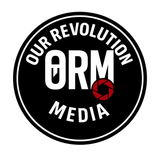What Does Labor Day Mean in Los Angeles?
Not Just a Holiday, But a History
In Los Angeles, Labor Day weekend often looks like a postcard: backyard barbecues, traffic to the beaches, sales at the malls. But behind the three-day weekend lies a history of struggle that is written into the streets of this city as much as anywhere in the country.
Labor Day was declared a national holiday in 1894, after federal troops brutally crushed the Pullman Strike in Chicago. It was a concession meant to pacify anger, a symbolic nod to workers without conceding real power. Yet the spirit of Labor Day has always been bigger than the holiday itself.
Here in Los Angeles, workers have carried forward that spirit through their own battles — in garment shops, on the docks, in janitorial services, in the fields, and now in the gig economy. To ask what Labor Day means in LA is to ask: who built this city, and what have they had to endure?
Garment Shops and Company Towns of the West
In the early 20th century, Los Angeles was advertised as a “union-free city.” Employers’ associations and newspapers worked together to portray unions as foreign and radical. Police and private guards raided union halls and arrested organizers.
But LA workers resisted anyway. Garment shops became infamous sweatshops where immigrant women — many of them Mexican and Asian — worked long hours for pennies. Dockworkers in San Pedro fought violent battles in the 1920s to unionize the ports. Migrant farmworkers in Pomona, El Monte, and the Inland Empire lived in grower-owned housing, dependent on company stores — a California version of the Pullman logic.
The conditions were different from Chicago, but the core struggle was the same: employers tried to control every aspect of workers’ lives. Labor Day in Los Angeles remembers not just the coal miners and rail workers of the Midwest, but the seamstresses, longshoremen, and farm laborers who faced down repression here.
East LA Walkouts: Students as Workers in Waiting
The connection between labor and dignity runs through the history of East LA. In 1968, thousands of Chicano students staged walkouts from their schools, demanding bilingual education, smaller class sizes, and better resources. Many of those students were the children of garment workers, janitors, and farm laborers.
They knew that poor schools were pipelines to poor jobs. They understood that democracy in the classroom and democracy in the workplace were linked. The walkouts were not just about education — they were about preparing for futures of dignity instead of exploitation.
Two years later, the Chicano Moratorium marched against the Vietnam War, linking racial injustice to economic inequality. Police cracked down violently, killing journalist Rubén Salazar. The lesson was clear: in Los Angeles, as in Chicago in 1886, when marginalized communities organize, the state responds with force.
Justice for Janitors: The 1990s Legacy
By the 1990s, Los Angeles had become home to a new wave of immigrant workers — many undocumented, many working in low-wage service industries. Janitors cleaning Century City’s office towers were paid poverty wages by contractors who exploited their immigration status.
In 1990, janitors marched through West LA demanding union recognition. Police beat them in the streets. Instead of silencing them, the violence drew public sympathy. The Justice for Janitors campaign became a national model, showing that immigrant workers could organize, strike, and win.
Today, when we celebrate Labor Day in LA, it is impossible not to see those janitors as central to the story. Their fight was not just about wages; it was about visibility and humanity.
Occupy LA, Fast-Food Strikes, and the Gig Economy
In 2011, Los Angeles became home to one of the country’s largest Occupy encampments. Tents filled the lawn around City Hall for two months, uniting students, union members, and unhoused Angelenos. They declared: “We are the 99%.”
That energy carried into the Fight for $15, with fast-food workers in South LA walking off the job. Their strikes were dismissed as unrealistic. Within years, the demand reshaped policy nationwide, culminating in California raising fast-food wages to $20 an hour.
Now, rideshare drivers and delivery workers are carrying the torch. At LAX, at Pomona warehouses, and on the streets of East LA, gig workers are demanding fair pay and recognition. They face the same dynamic that Pullman’s workers faced: costs shifted onto their backs, while corporations skim profits. Labor Day for them is not rest; it is another day of organizing.
What Labor Day Means in LA Today
So what does Labor Day mean in Los Angeles?
It means remembering that this city was built by workers who were told they didn’t belong, who were paid too little, who were policed and repressed — but who organized anyway. It means understanding that the struggles of garment workers, janitors, and fast-food employees are not separate stories, but chapters of the same book.
Most of all, it means seeing the present clearly: Labor Day is not just a holiday. It’s a reminder that dignity at work has always been fought for, never given.
This year, while some celebrate at the beach, others will be rallying for fair contracts, protesting exploitative gig platforms, or marching for housing justice. Los Angeles carries both sides of Labor Day at once: rest and resistance.
The holiday was created to pacify workers after a massacre. In LA, it should be reclaimed to honor those who refuse to be pacified.

